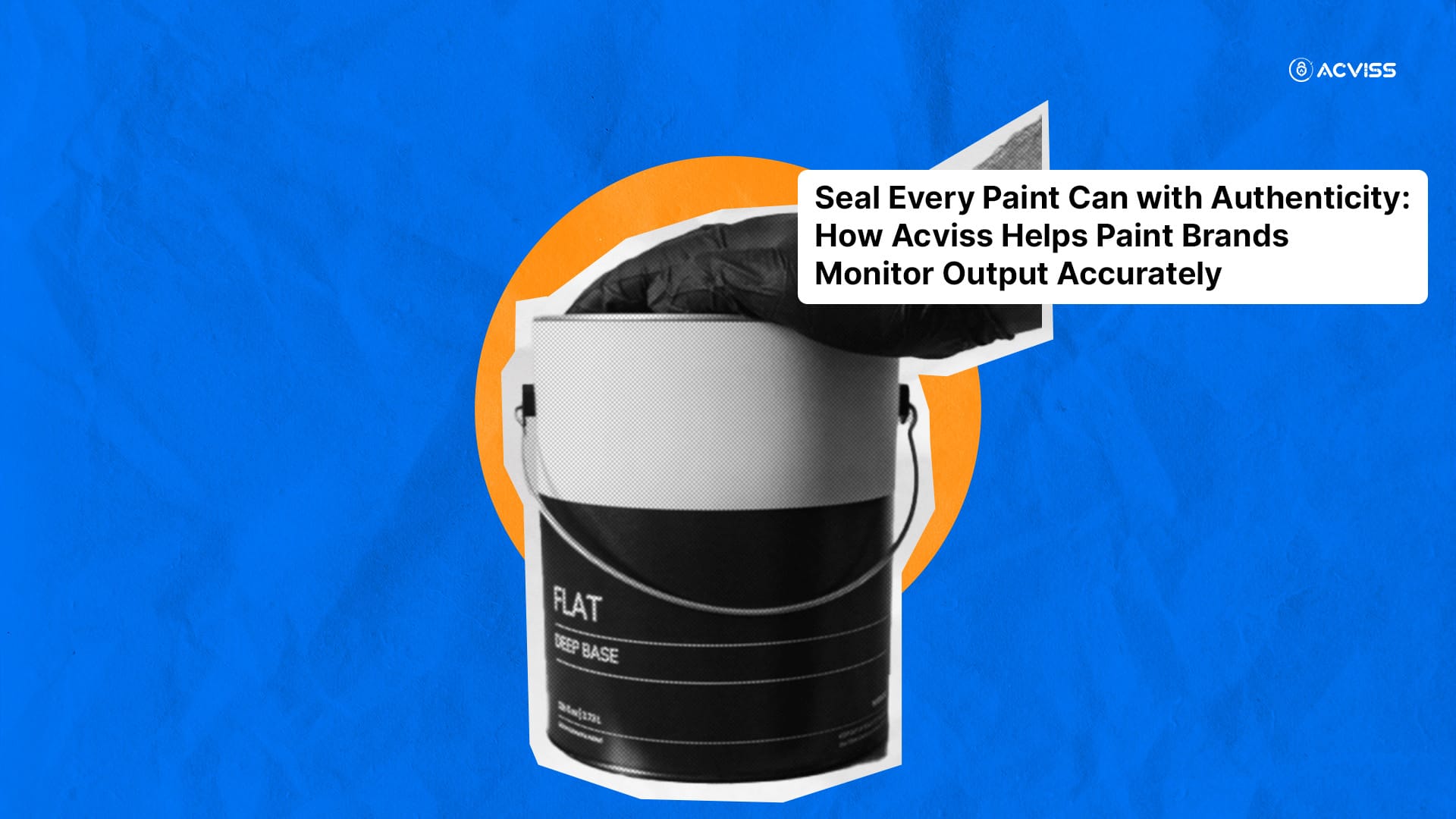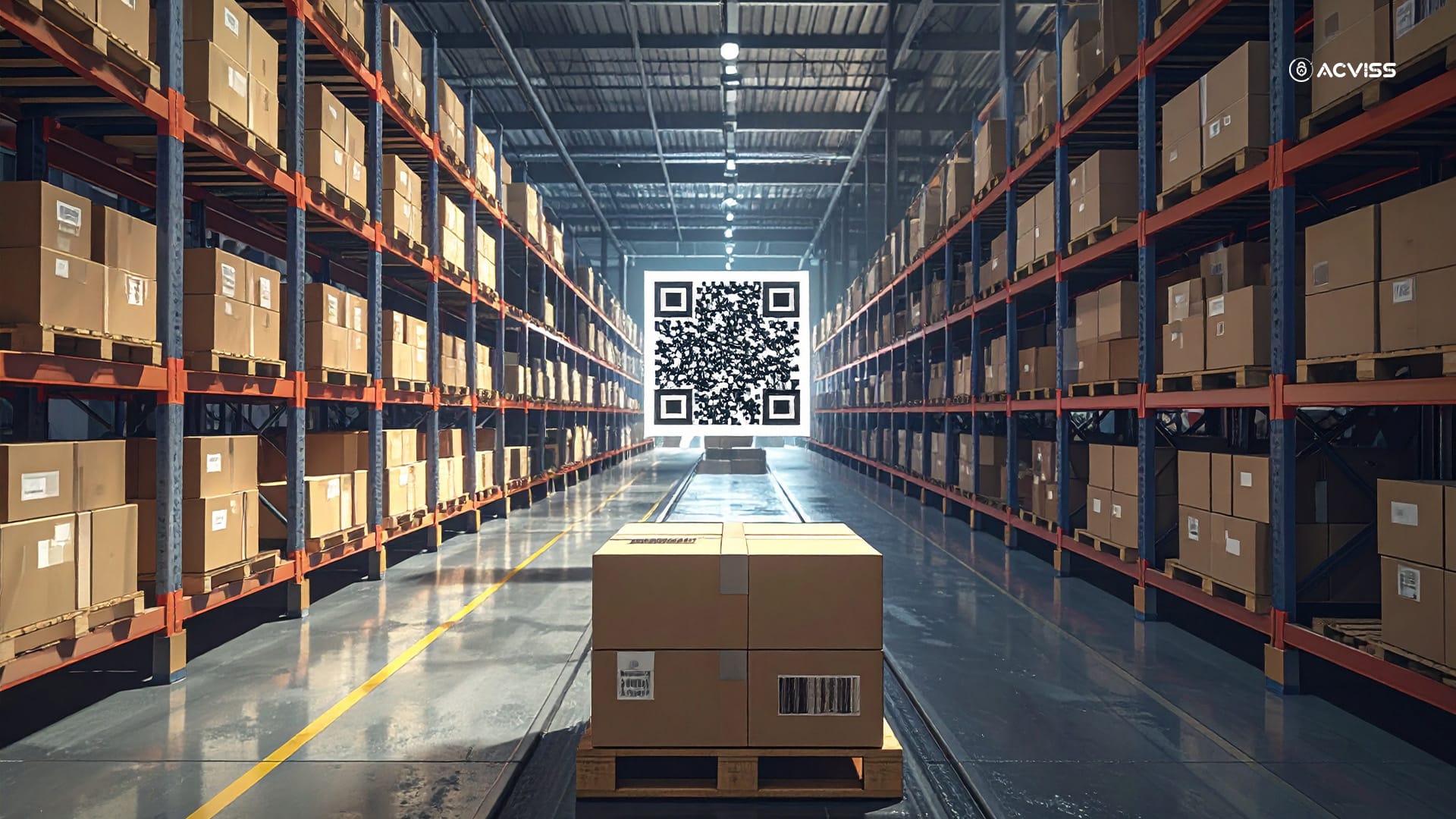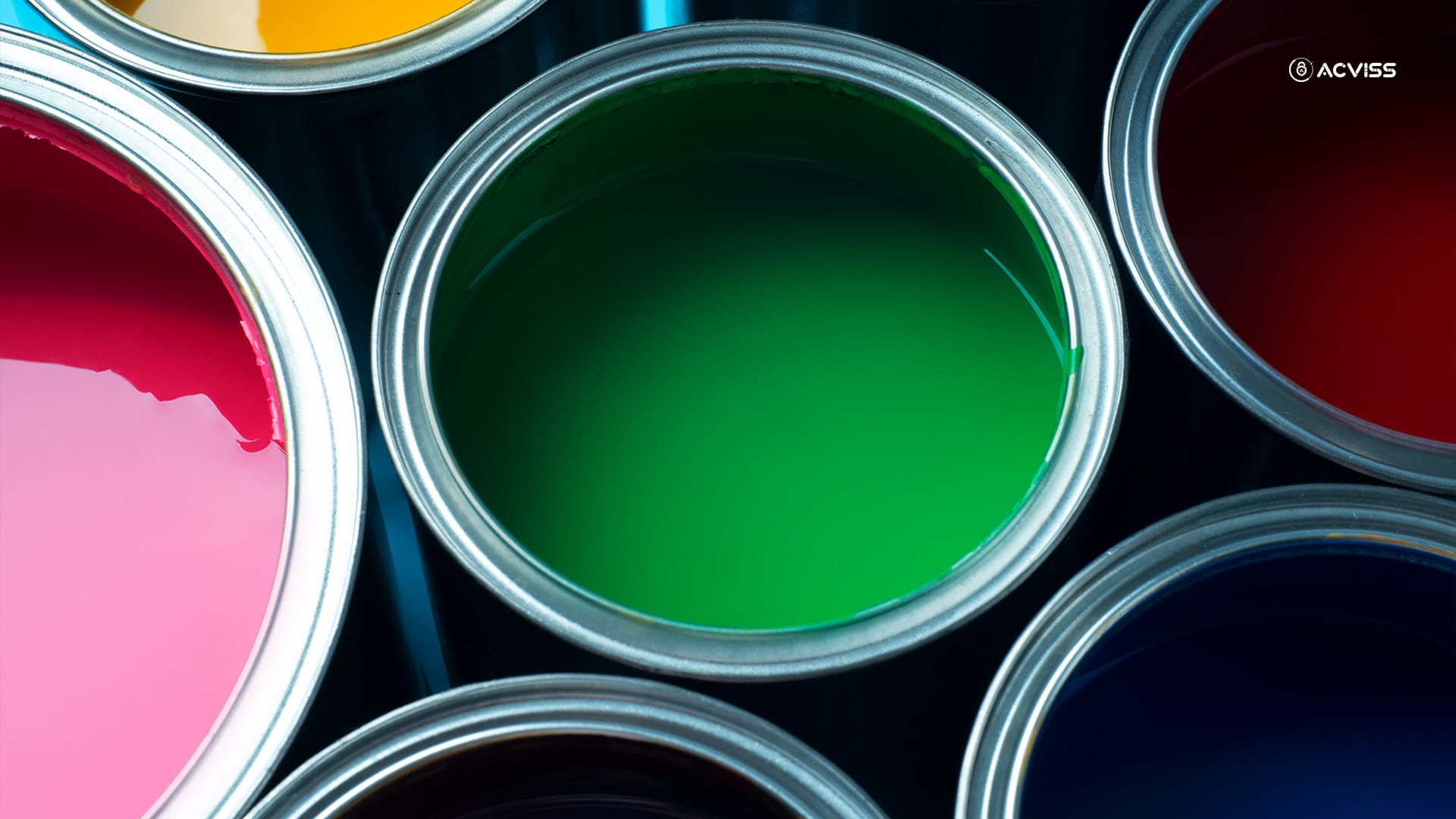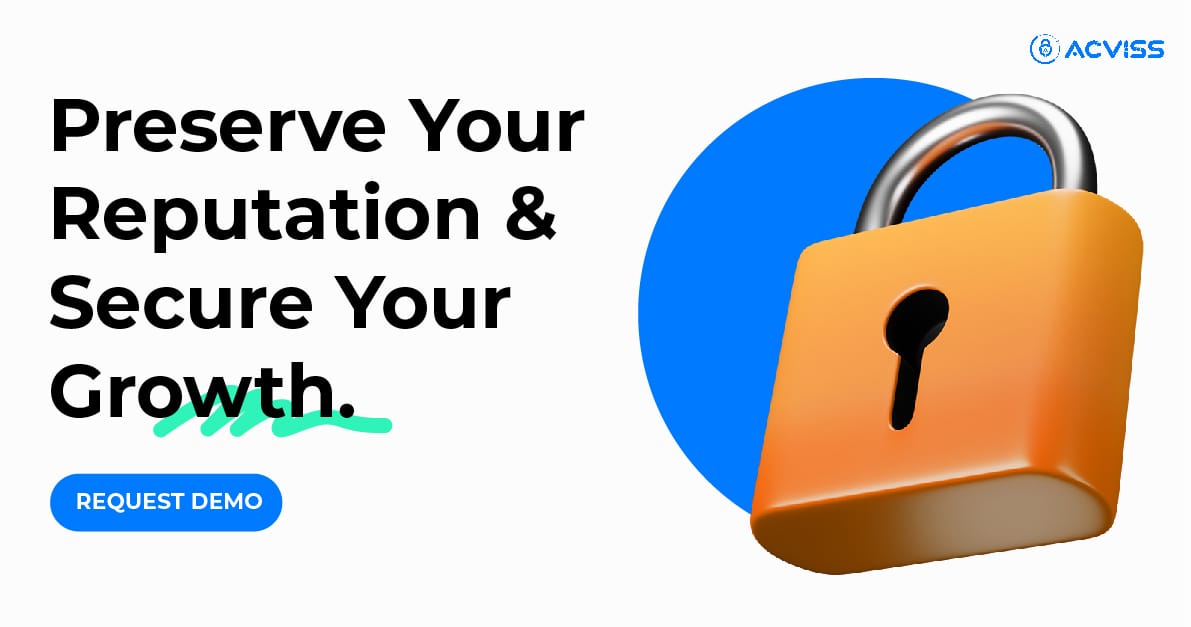Every Paint Can with Authenticity: How Acviss Helps Paint Brands Monitor Output Accurately

The paint industry thrives on trust. Customers expect consistency in shade, finish, and durability every time they purchase a can of paint. Manufacturers, on the other hand, rely on efficient production and distribution systems to maintain their brand reputation. Yet, the sector faces a growing challenge: counterfeit products, unauthorised overproduction, and misuse at dealer levels.
A single unverified paint can in the market is more than just lost revenue. It risks eroding consumer confidence and opens doors to compliance failures. Ensuring authenticity at every step is no longer a defensive strategy; it is central to building resilience in a highly competitive market.
Why Authenticity Cannot Be Overlooked
The risks that paint manufacturers face are not hypothetical. They affect daily operations, customer relationships, and long-term growth. A closer look reveals why securing authenticity is critical:
1. Revenue Protection
Counterfeiters often target paints because packaging is relatively easy to replicate. Without robust safeguards, fake cans enter the supply chain, undercutting prices and directly affecting margins. Similarly, overproduction. where unauthorised units are created beyond official quotas, quietly eats into revenue streams.
2. Customer Confidence
Paint is an investment for customers. Whether for a home, office, or large infrastructure project, they expect durability and safety. A simple QR scan that verifies the can’s origin reassures customers that they are investing in a genuine product backed by the brand’s promise.
3. Regulatory Compliance
Across many regions, paints and coatings fall under strict monitoring because of their chemical compositions. Authenticity systems allow manufacturers to provide proof of compliance instantly, minimising the risk of penalties and ensuring smoother audits.
4. Dealer and Distributor Accountability
Dealers play a pivotal role in paint distribution, but without proper monitoring, stockpiling, unauthorised reselling, and fraudulent returns can occur. Secure traceability ensures that every can is tracked, reducing misuse at critical distribution points.
Building Traceability into Every Paint Can

Modern authentication systems rely on QR-based traceability, powered by secure, non-cloneable labels and integrated dashboards. Each paint can becomes a unique, verifiable unit in the supply chain.
Non-Cloneable Tamper-Proof Labels
Every paint can is sealed with a QR code designed to be impossible to duplicate. This simple addition offers powerful protections:
Customers and dealers can immediately detect tampering.
Each code serves as a digital certificate of authenticity.
Counterfeit packaging, even when visually identical, fails to replicate the unique identifiers.
Real-Time Authentication at Every Step
Once cans are in circulation, authentication becomes effortless. Dealers, distributors, and even end customers can scan the code using a smartphone. Each scan provides:
Proof that the can originates from the brand.
Timestamp and location of verification.
Tracking of scan patterns to detect irregularities across markets.
This transparency ensures both the brand and the buyer know the product’s authenticity without additional infrastructure.
Complete Visibility across Supply Chain.
Authentication is only the first layer. What truly empowers paint manufacturers is the ability to view, analyse, and act on data from across the supply chain. This is where Origin by Acviss plays a critical role.
Through Origin’s dashboards, brands can:
Monitor product flow from production to retail in real time.
Detect anomalies, such as duplicate scans or mismatched data points.
Gain insights into which markets see the most verifications.
Quickly identify bottlenecks, fraud, or stock leakage.
Combining secure packaging with a centralised view of supply chain data helps manufacturers move from reactive problem-solving to proactive management.
Closing the Overproduction Loophole
Overproduction fraud remains a silent threat to paint companies. Consider a scenario where a factory is contracted to produce 10,000 cans for a batch order. A rogue operator manufactures an additional 500 cans, planning to push them into the grey market.
With QR-based traceability, those 500 cans fail to pass verification:
They lack registered, verifiable QR codes.
The system flags the discrepancy between planned production and verified outputs.
The dashboard alerts brand managers in real time.
This creates a transparent link between production quotas and market presence, making unauthorised overproduction nearly impossible to conceal.

Benefits for Paint Brands
When authentication and traceability are built into operations, paint manufacturers gain more than just counterfeit protection. The value extends across the business ecosystem:
Strengthened Brand Reputation
Every genuine claim can be verified by customers reinforces trust. This credibility translates into stronger brand loyalty and positive word of mouth.
Reduced Revenue Losses
Counterfeiting, grey market sales, and overproduction fraud collectively account for significant losses. Eliminating these leakages has a direct financial impact.
Dealer and Distributor Management
With verifiable records for every can, brands hold dealers accountable for sales, returns, and the handling of inventory. Disputes reduce, and efficiency improves.
Smarter Business Decisions
Data from Origin provides actionable insights. Brands can identify which markets have higher scan activity, which products face more verification attempts, and how customers interact with packaging. These insights inform production planning, marketing strategies, and supply chain optimisations.
Authenticity as a Competitive Advantage
The paint industry is highly competitive, with multiple brands often competing within the same price segment. While product quality is a differentiator, authenticity and trust are becoming equally important. Customers increasingly value transparency, knowing not just the quality of the product, but also its origin, compliance, and handling.
For manufacturers, investing in authenticity solutions transforms a challenge into an advantage. Each secure paint can becomes a brand ambassador, communicating reliability, compliance, and innovation to customers.
The Road Ahead for Paint Manufacturers
As technology adoption grows across industries, customers are developing new expectations from brands. For paint companies, this means:
Providing easy, digital verification methods.
Demonstrating transparency in manufacturing and distribution.
Using data to respond quickly to supply chain risks.
By sealing every paint can with secure identifiers and linking them to platforms like Origin, paint manufacturers can align with these expectations. The result is not only protection from fraud but also a foundation for smarter, more customer-centric operations.
Conclusion
Authenticity in the paint industry is no longer a defensive measure; it is a growth strategy. Counterfeiters, grey market operators, and fraudulent practices pose real threats, but with QR-based authentication and traceability, these risks can be contained.
Solutions like Certify and Origin ensure that every paint can carry a unique, verifiable identity and that manufacturers gain a complete, data-driven view of their supply chain. The result is stronger customer trust, efficient dealer management, and a competitive edge in a demanding market.
For paint brands looking to secure their future, sealing every can with authenticity is not an option. It is the standard for survival and growth in a transparent, technology-driven era.
